5 ways to improve your soil for a healthier lawn
Lawn care is an essential part of maintaining a beautifully landscaped garden all year round. And whether you want to make your grass greener or thicker, a key component is the quality of your soil.
In fact, poor soil is one of the common signs your lawn needs urgent repairs. Along with other things to look out for such as yellowing grass or dead patches, your soil quality can make all the difference to healthy growth, and protection from moss or garden diseases.
While it might seem like the end of the road for your lush lawn, don’t despair. There are several ways to treat your soil and improve its quality — it just involves some extra care and necessary soil amendments.
So, if you want to maintain a healthier lawn all year round, try out these 5 ways to improve your soil.
1. Test the soil
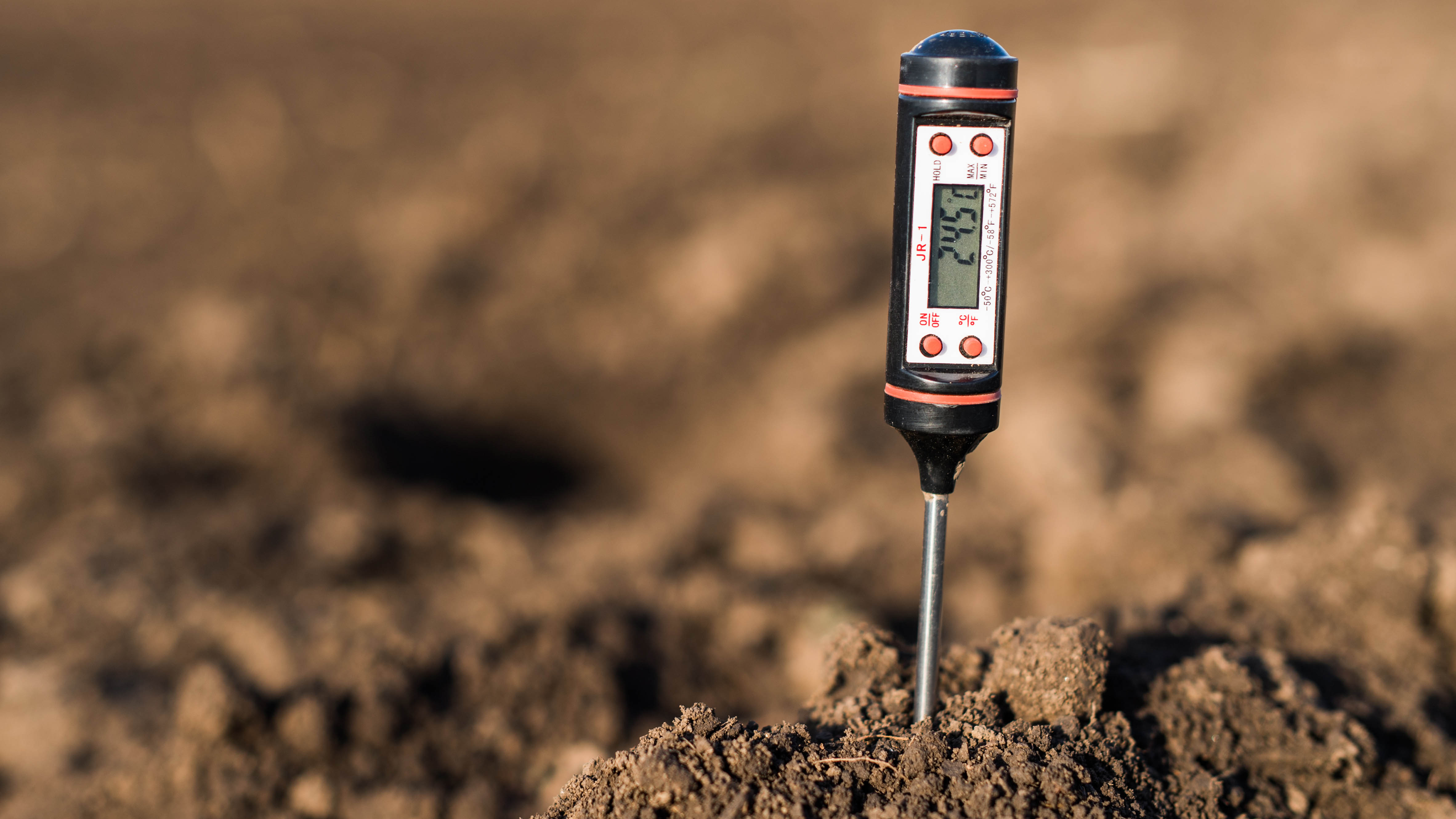
Before improving the quality, the first thing to do is to test the soil. This will help you to get a better picture of its pH levels, nutrient levels and exactly what’s missing. Depending on your grass type, experts recommend having a slightly acidic pH level of 6-7, alongside plenty of nitrogen, phosphorus and potassium. However, cool-season grasses prefer the pH to be slightly higher than warm-season grasses.
You can test the pH levels with a soil test kit, like this MySoil Soil Test Kit ($29.99, Amazon), that will indicate what changes you can make to improve conditions. This can often be things like adding soil amendments or necessary fertilizers to the soil. You should aim to test your soil yearly to make sure your soil is getting all the sufficient minerals.
Once you’ve given your soil the necessary nutrients, fertilizers or soil amendments, test soil again to ensure conditions are ideal.
2. Aerate the soil
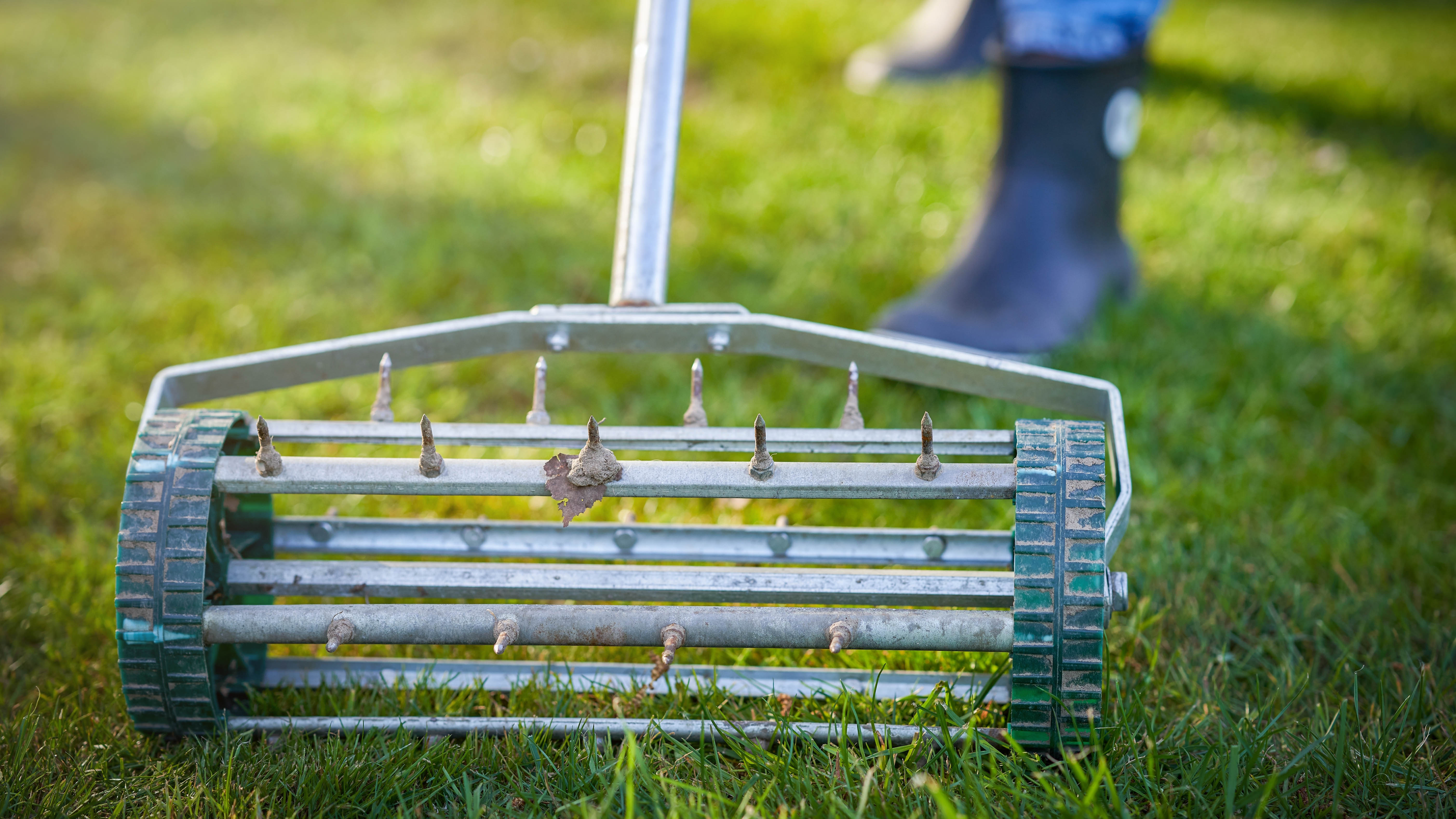
Another thing to avoid is soil compaction caused by heavy machinery or foot traffic over time. When the soil is too dense or the grass is too thick, this will prevent air and essential nutrients from penetrating the soil. In addition, this can result in a layer of thatch forming on the surface which impairs your grass from reaching the necessary water.
By aerating your lawn, this helps to prevent this, allowing air, water and nutrients to deeply reach the roots, and improve soil. Aerating essentially involves puncturing the ground to allow better air circulation in the soil with either a dedicated lawn aerator or garden fork. The two types of aerator are, spike and core aerators. Spike aerators feature long spikes that puncture the ground as you pass over it, while core aerators pull up ‘cores’ of soil as they work, leaving them on the surface.
To aerate your lawn generally, simply punch holes using a fork to about five or six inches in depth. This will allow your lawn to receive all the nutrients it needs to thrive. Ideally, aerate your lawn twice a year to maintain a healthier lawn.
3. Reduce thatch
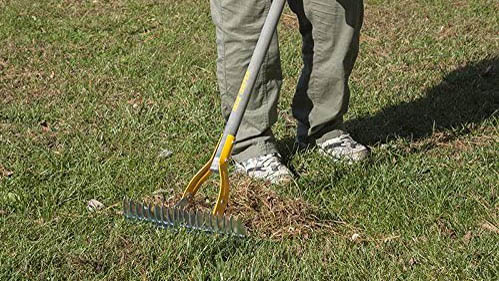
In addition, you need to reduce thatch which can prevent your soil from sufficient water and nutrients it needs. This involves raking over the lawn to allow air or moisture to penetrate the grass better.
Essentially, thatch is a layer of decomposing plant materials, such as dead leaves and trees, that builds up on the surface of the soil. If it gets thicker than ½ inch, this can suffocate your lawn, stopping it from getting enough air, water and key nutrients. It also prevents healthy root development and can make your lawn prone to insect and disease issues.
4. Topdress with organic material
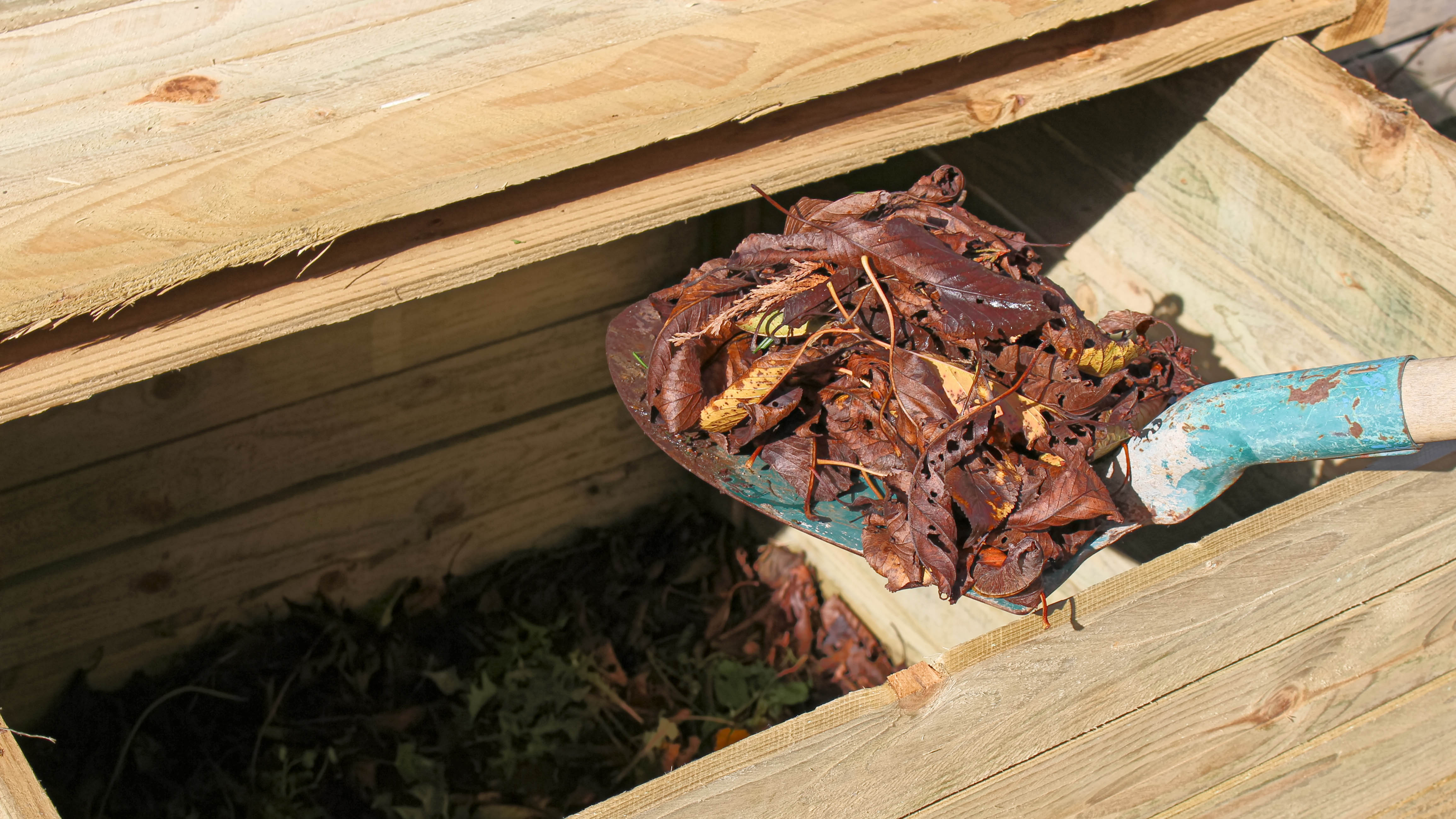
If your soil is in poor condition, a topdressing of compost, leaf mould or any other organic matter will provide essential nutrients. Composting is a great way of recycling organic waste to turn into a nutrient-rich soil. This will also prevent topsoil erosion, balances the pH level of soil neutral and prevents certain lawn diseases. Composting will also attract beneficial worms, insects and other organisms needed to create nutrient-rich soil.
After mowing your lawn, you can reuse your grass clippings to make nutrient-rich compost, and feed the grass. Plus, leaving the grass clippings on your lawn helps it to retain moisture — especially during those hot months. Depending on your soil type, you can topdress the lawn with sands or other mixtures.
Just avoid these 11 things you should never throw on the compost heap.
5. Put down mulch
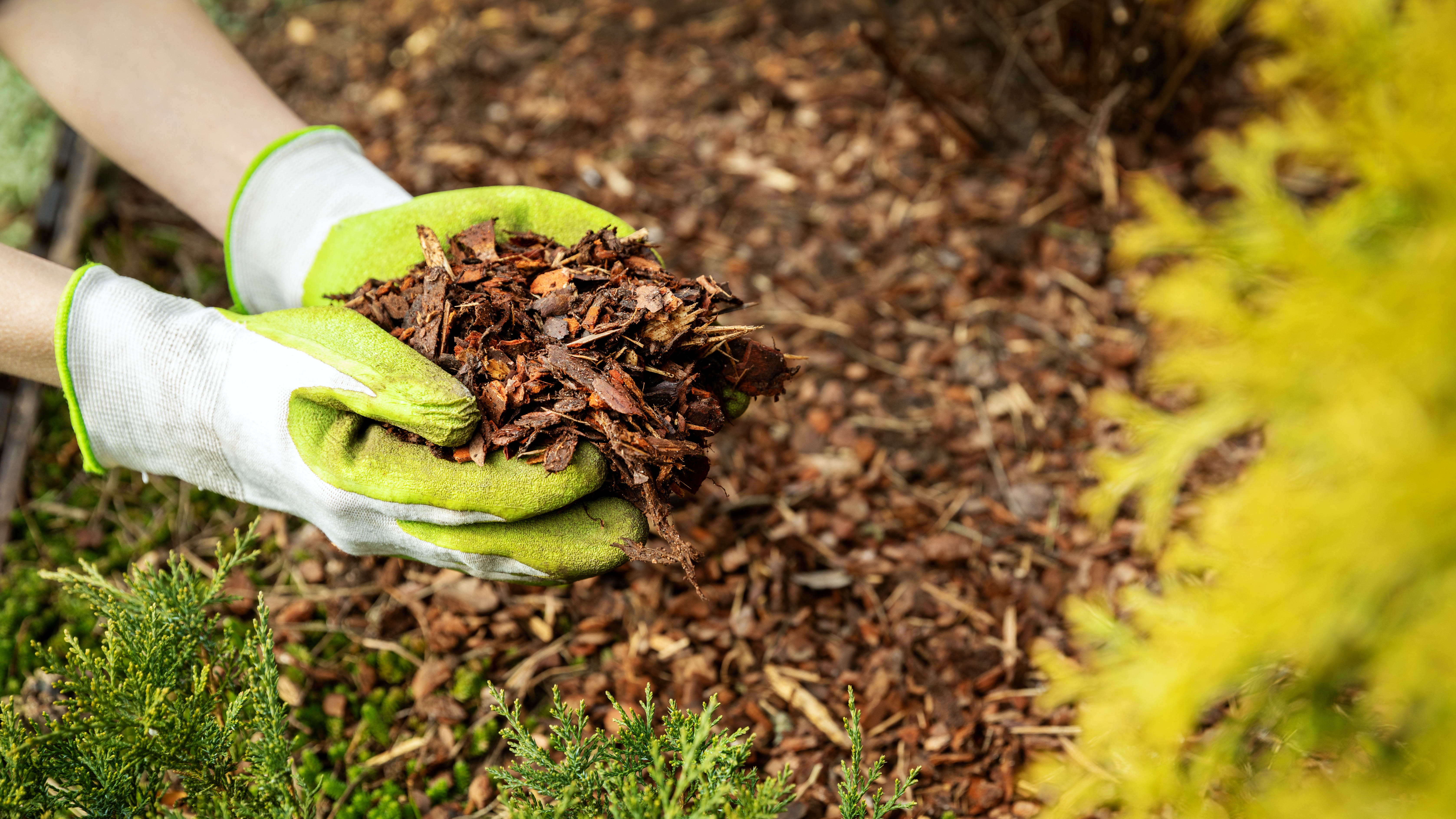
Another great option to fertilize the soil and grass is to use mulch. Essentially, mulch is a thick layer of material covering the soil and around plants, that can add nutrients to the soil, and acts as a barrier against direct sun or windy conditions. For instance, a layer of organic mulch such as grass clippings, shredded leaves, bark or pine needles will feed the soil as it decomposes over time.
On the other hand, inorganic mulch can prevent the growth of weeds, and lock moisture into the soil. However, this is not as efficient as organic mulch in getting essential nutrients to the soil.
What’s more, the process of mulching helps to improve the water conservation quality of your soil — depending on the mineral composition. Sandy soil tends to release the water quickly, so mulch will prevent your lawn from becoming too dry.
Depending on your soil type (clay or sandy), you can also buy slow-releasing fertilizers that will help to stimulate biological activity, nourish the soil, and encourage the growth of grass roots. Typically, liquid fertilizers can last for two to six weeks in the soil, while granular fertilizers have a slow rate of release and a life span of around two to five months.
You’ll need to know when is the best time to water your lawn, according to experts.
More from Tom’s Guide
For all the latest Technology News Click Here
For the latest news and updates, follow us on Google News.
